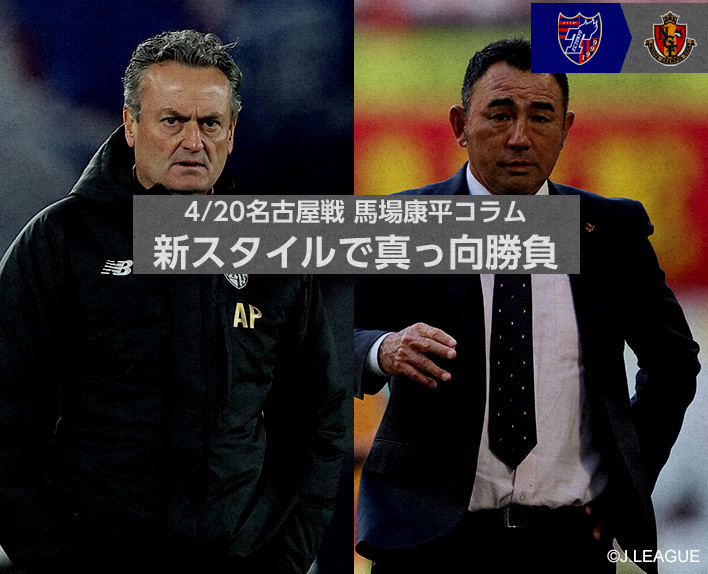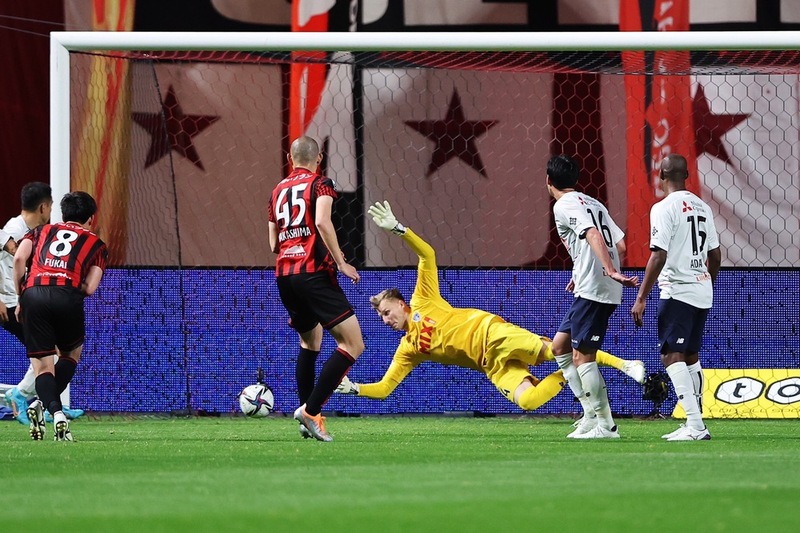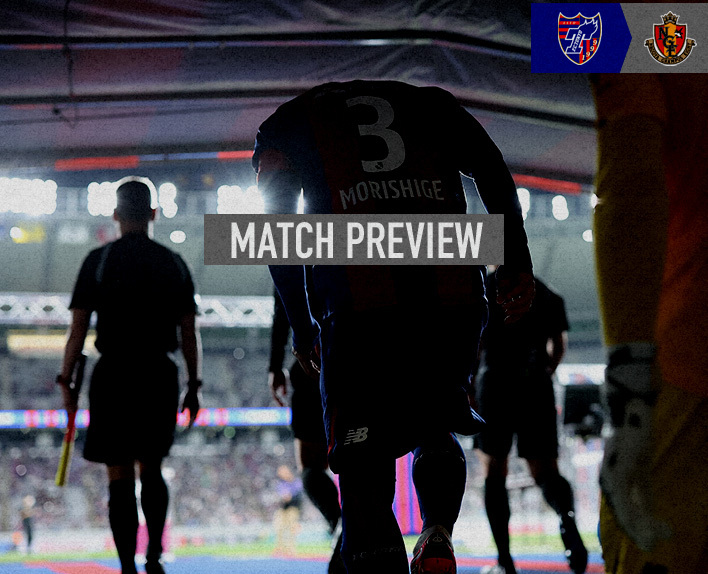This is where it all comes down to, where our daily actions are put to the test. It's a painful reminder for me, but for the players, their daily training is what leads up to the big games every time. And it's at Ajinomoto Stadium where these teams, built on the foundation of their daily efforts, will clash.
Nagoya Grampus, which was taken over by Kenta Hasegawa as the head coach from this season, has been struggling to break free from its struggles. It seemed to be struggling with the updates from the previous coach, Massimo Ficcadenti, who led a team that relied on solid defense and quick counterattacks.
However, it seems that a ray of hope has been found here. In the 8th round of the J1 League on the 10th, they suffered a complete defeat of 0-2 against Hokkaido Consadole Sapporo. Taking advantage of that defeat, the coach said, "I talked to the players about what kind of soccer I want to play myself." The style of play they showed against Sanfrecce Hiroshima in the J League YBC Levain Cup, which they faced three days later after changing the system to 3-5-2, was exactly the soccer that Coach Hasegawa aims for.
Previous -.
The commander, who looks like Aggressive wearing clothes, is trying to instill that consciousness in Nagoya. It was the same with FC Tokyo, which he led until last season. Phrases like "Intensity," "Fight," and "Hard Work" that I heard many times still remain in my ears. In every team he coached, he desperately made skillful players handle the ball and fight. I thought it would be the same in Nagoya, but there may have been some hesitation. However, it is now time to release the limiter. In the past two games, Nagoya, with Kentai-ism in full swing, is trying to transform into a relentless intensity.
There is a phrase that remains deeply impressed in the words spoken during the Tokyo era.
"When building a team, you know. There are times when there's a clicking sound, like a click. It's like fitting puzzle pieces together."
The sound that rang out was surely the return of Yuichi MARUYAMA. After the previous match against Kashima Antlers, it was said that "his return led to a change in positioning." When we examine the new Nagoya design, it becomes clear. The positioning is 3-1-4-2, but the center is very solid. When the ball is held by the opponent, they close the center and push it out from there. Not only do they have two inside halves to target the opponent aiming for the anchor side, but the three backs, who are all actors, also actively jump out and fill the gaps. From this, it can be seen that the entire team has a strong awareness of moving forward.
And, the familiar Kentaro-style "fast break" is still alive, sprinting during the ball movement to hunt the ball from the front line. Yoichiro KAKITANI and Mu KANAZAKI, who are proud of their technique, will seal the origin of the ball while chasing it twice or three times. There should also be an intention to place Mateus CASTRO at the forefront. In the Kashima game, that short counterattack became the biggest scoring opportunity. In the 28th minute of the first half, Inagaki stole the opponent goalkeeper's pass in the enemy territory, and from there, it was connected to Sendo and Mateus for the finish.
Anyway, go forward, go forward, come out with momentum even with the opponent's ball. It's really forward-leaning, that familiar soccer.
How will this reborn Nagoya and Tokyo fight?
The answer is obvious. There is no need to change the way we fight.
Just do what we have been doing since before the start of the season. In order to prevent our own goal from becoming a hunting ground, we need to have the speed to separate from the ball without creating opportunities for the opponent. This is also what Coach Albert has consistently been asking for.
Running the ball and wearing down the opponent, the third movement becomes effective against tight defense. For example, the inside half or the side back can move into the space created by the wing coming down. The fluid triangle that changes positions and moves the opponent is the essence of positional play. To dominate the game, immediate recovery of the lost ball is essential. In the theme of unity, if we lose in the ball contest, it plays right into Nagoya's hands.
Both teams, who are working on a new game model, have been implementing it for several months. The styles have gradually become more distinct and clash with each other. This is where their everyday actions are reflected.
And, because it's important, I want to persistently talk about the column I wrote before. This is not a story about coming home, but rather about "I'm back, welcome home."
"Complicated?"
No, I have to challenge head-on against Manager Kenta HASEGAWA who leads Nagoya. That's because it's the football etiquette I learned from a passionate and enthusiastic coach. Let's compete, Kenta-san.
Text by Tadashi BABA (Freelance Writer)





